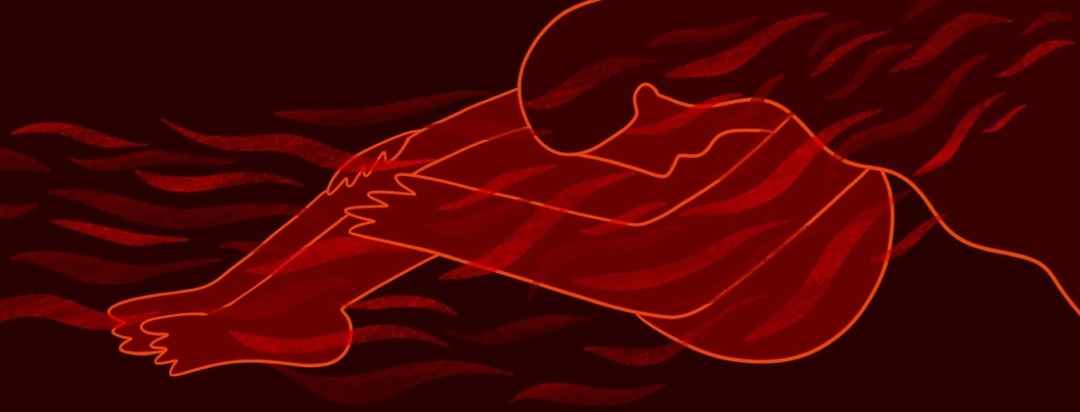The Fibromyalgia-Restless Legs Connection
Did you know that, if you have fibromyalgia, there’s a 1 in 3 chance that you also have a sleep disorder known as restless legs syndrome (RLS)?
Does this sound like you?
Have you been diagnosed with either fibromyalgia or RLS? Do you deal with widespread pain, disrupted sleep, daytime fatigue, and mood dysfunction?
What is fibromyalgia?
The Centers for Disease Control and Prevention (CDC) defines fibromyalgia as “a condition that causes pain all over the body (also referred to as widespread pain), sleep problems, fatigue, and often emotional and mental distress.” Those diagnosed with fibromyalgia may experience something known as “abnormal pain perception processing,” a kind of increased sensitivity to pain.1
What is RLS?
And then there’s RLS, which causes “unpleasant or uncomfortable sensations in the legs and an irresistible urge to move them.” The National Institute of Neurological Disorders and Stroke characterizes RLS as “a neurological sensory disorder.” Like fibromyalgia, it can lead to fatigue, mood dysfunction, and distress caused by sleep loss.2
Separately, these conditions can bring misery to those who experience them. Together, it’s double the trouble. Does this sound like you? If so, take heart; it’s common and, thankfully, treatable.
The science behind this 'double trouble'
10 years ago, the Journal of Clinical Sleep Medicine (JCSM) published a groundbreaking study that found that 33 percent of people with fibromyalgia also experienced the unpleasant symptoms of RLS. They also determined that RLS occurs 10 times more often in people with fibromyalgia than in the general population.3
The people with fibromyalgia who participated in this research study reported higher rates of insomnia and daytime sleepiness. Their sleep dysfunction, as measured by the Pittsburgh Sleep Quality Index (an industry gold standard for measuring sleep impairment) showed much higher scores directly related to having RLS.
“At least a portion of the disturbed sleep commonly observed in fibromyalgia is attributable to RLS,” the study revealed.
The study authors concluded that “Clinicians should routinely query (fibromyalgia) patients regarding RLS symptoms because treatment of RLS can potentially improve sleep and quality of life in these patients.”3
When restless legs syndrome (RLS) and fibromyalgia collide
Some research seems to suggest that treating RLS in a person with fibromyalgia may also provide pain-relieving benefits for their fibromyalgia symptoms.
RLS may lead to both disrupted sleep and insomnia, but it’s treatable. This makes it a key symptom for doctors to look out for, especially in patients with other kinds of pain disorders.
The JCSM study linking RLS and fibromyalgia spells it out clearly: “Treating restless legs syndrome may be one of the keys to reducing fatigue and improving quality of life in people with fibromyalgia.”3
You can also try another approach—ask your primary care physician to refer you to a pain specialist to treat RLS related to fibromyalgia. Some pain doctors have training specific to the needs of people with RLS. The links between fibromyalgia and poor sleep are well known. Pain cycles, by whatever cause, disrupt sleep.
RLS has the same effect. Together these can worsen nightly sleep, leading to higher pain sensitivity and greater daytime sleepiness and fatigue. If you find yourself in this predicament, be encouraged: treating one or the other can bring relief for both.
Crossroads of conditions
RLS is also linked to depression and migraine. In fact, one recent study in 2018 connected both RLS and fibromyalgia with depression and migraine in a four-way relationship. Researchers in the 2018 study suggested that “the greater frequency of restless legs syndrome, depressive symptoms, and fibromyalgia in the patients with migraine supports the role of dopamine, which is common to all three disorders.”4
This confirms that common link, the neurotransmitter dopamine, which was alluded to in the earlier JCSM study.
Knowing about this specific crossroads of conditions could illuminate how a person experiencing all of these conditions can better move forward with appropriate treatment.
Community Poll
Has a loved one ever been affected by your RLS symptoms?

Join the conversation